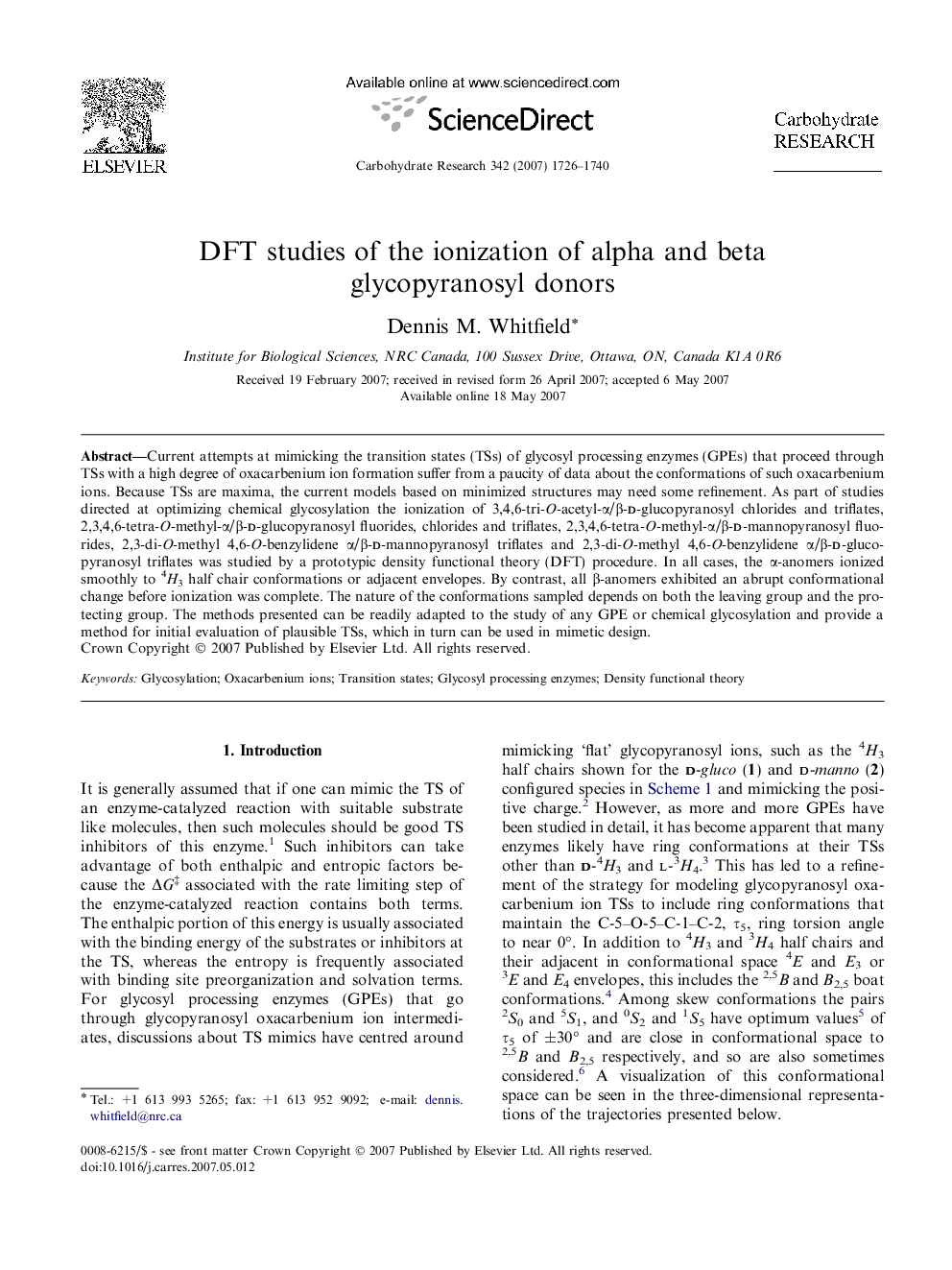| Article ID | Journal | Published Year | Pages | File Type |
|---|---|---|---|---|
| 1390826 | Carbohydrate Research | 2007 | 15 Pages |
Current attempts at mimicking the transition states (TSs) of glycosyl processing enzymes (GPEs) that proceed through TSs with a high degree of oxacarbenium ion formation suffer from a paucity of data about the conformations of such oxacarbenium ions. Because TSs are maxima, the current models based on minimized structures may need some refinement. As part of studies directed at optimizing chemical glycosylation the ionization of 3,4,6-tri-O-acetyl-α/β-d-glucopyranosyl chlorides and triflates, 2,3,4,6-tetra-O-methyl-α/β-d-glucopyranosyl fluorides, chlorides and triflates, 2,3,4,6-tetra-O-methyl-α/β-d-mannopyranosyl fluorides, 2,3-di-O-methyl 4,6-O-benzylidene α/β-d-mannopyranosyl triflates and 2,3-di-O-methyl 4,6-O-benzylidene α/β-d-glucopyranosyl triflates was studied by a prototypic density functional theory (DFT) procedure. In all cases, the α-anomers ionized smoothly to 4H3 half chair conformations or adjacent envelopes. By contrast, all β-anomers exhibited an abrupt conformational change before ionization was complete. The nature of the conformations sampled depends on both the leaving group and the protecting group. The methods presented can be readily adapted to the study of any GPE or chemical glycosylation and provide a method for initial evaluation of plausible TSs, which in turn can be used in mimetic design.
Graphical abstractFigure optionsDownload full-size imageDownload as PowerPoint slide
